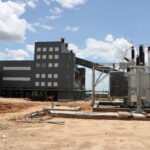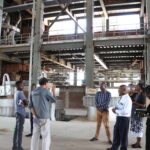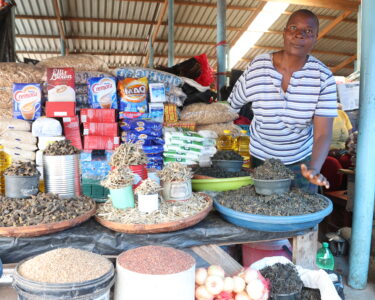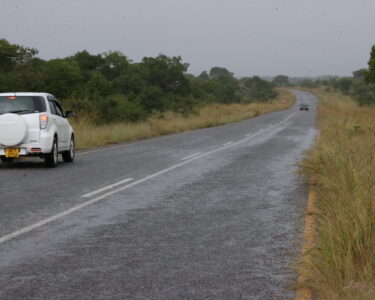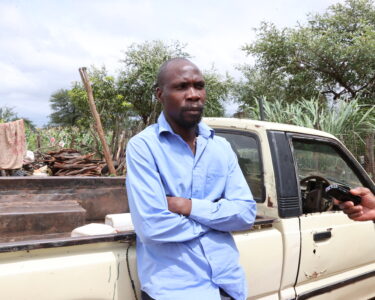… Zimbabwe Zhongxin chrome smelter set to be the biggest and most efficient in the country
The good news in the Masvingo Province seems to know no end. Forty kilometres west of Masvingo City, in the Mhandamabwe area of Mashava, off the Bulawayo Road, has risen a chrome smelter that is expected to provide hundreds and hundreds of jobs to the local people and small-scale miners. Baffour Ankomah reports.
People hailing from Mhandamabwe and the adjoining areas of Mashava in the Masvingo Province and small-scale chrome miners will be among the major beneficiaries of a new chrome smelter operated by the Zimbabwe Zhongxin Smelting Company (ZZSC), which is expected to start operations in the next few weeks in the Mhandamabwe area.
The smelter, located 40 km west of Masvingo city, is a joint venture between the ZZSC and the Ministry of Defence and War Veterans.
Wang Linyi, the Chinese general manager of ZZSC, has assured locals of the Mashava area that they will be his priority when employing workers for the smelter, which is expected to produce 50,000 tonnes of chrome by year.
“There will be employment opportunities for locals when the smelter starts working,” Linyi told a visiting team of Brick by Brick editors and Masvingo provincial government officials who went to the plant on 16 February 2023 to see the progress of work.
“We intend to support locals to improve their livelihoods, especially those who live in the neighbourhood of the plant,” the affable Linyi added. “Besides giving employment to locals, we are also expecting to give opportunities to small-scale miners to mine chrome. We are going to buy chrome from local miners, thereby improving their livelihoods.”
The first phase of the smelter is complete and is expected to come on stream by April 2023. Two other phases will come in the future. Over US$30 million was spent on the first phase, which started in February 2020, but progress was held back by the Covid-19 pandemic which disturbed operations.
And then electricity problems took over when the first phase was finally completed in late 2022. The smelter has 2 furnaces and each one consumes 33 kw of electricity per hour. Linyi was hopeful that by mid-March 2023, electricity would be provided by ZESA for operations to begin.
A local company contracted to build a dedicated sub-station for the smelter inside the nearby Tokwe substation had delayed the work, negatively affecting the start date of operations.
Despite the teething problems, Linyi wants the ZZSC to become the biggest and most efficient smelter in Zimbabwe. “When phases 2 and 3 are completed, we will be the biggest and most efficient smelter in Zimbabwe,” Linyi promised, repeating: “We will be the best and most efficient.”
He said he had been promised electricity to run one furnace in the meantime. “With one furnace, we hope to employ 250 local workers. With two furnaces, we will employ 400 workers,” he told Brick by Brick.
The history of ZZSC in Zimbabwe goes back to 2012 when its parent company, the Zimbabwe Zhongxin Coking Company (ZZCC), started operations in the country. With head office in Harare, ZZCC’s main branches are in Hwange, where it has a coking company, a 50 MW coal-fired thermal-power plant, a coal mine, a bricks company, and a coal crushing plant.
The coking company started in 2016, the thermal plant came on stream in 2022, the coal mine began operations in January 2023, and the coal crushing plant commenced business in mid-March 2023.
Zim-China relations
Linyi talked about China-Zimbabwe cooperation which, he said, went back 40 years. “As we move on, I expect our relations to grow from strength to strength,” he added.
Linyi is grateful to the government and people of Zimbabwe, especially the local authorities in the Masvingo Province, for the support they have given him in the construction of the plant.
“They have given us all the support we needed to set up this plant,” Linyi said. I want to take this opportunity to thank them – the government, the people, and the local authorities. So far, I have had enough support from the government, such that I don’t have any challenges for now, apart from the lack of electricity.”
Asked how he planned to make his company “the biggest, the best, and the most efficient” chrome smelter in the country, Linyi explained: “We are going to start with one furnace, and as time goes on we will go to two furnaces. Then we will construct Phase Two of the project, and then Phase Three. We are going to take it step by step, brick by brick. I want to make it a very big enterprise, if only we can get the electricity and ores we need to operate. It will be the biggest company.”
Phase Two is expected to cost an additional US$40 million, bringing the total cost of Phases One and Two to US$70 million. Phase Three is not costed yet.
Linyi told Brick by Brick that the bulk of the ores to feed the smelter would come from the Mashava area and other local companies. “When we operate two furnaces, we will need a lot of raw materials,” he explained. “The government is going to offer us a place to mine chrome ourselves. So we are going to mine, and also buy ores from other producers.”




